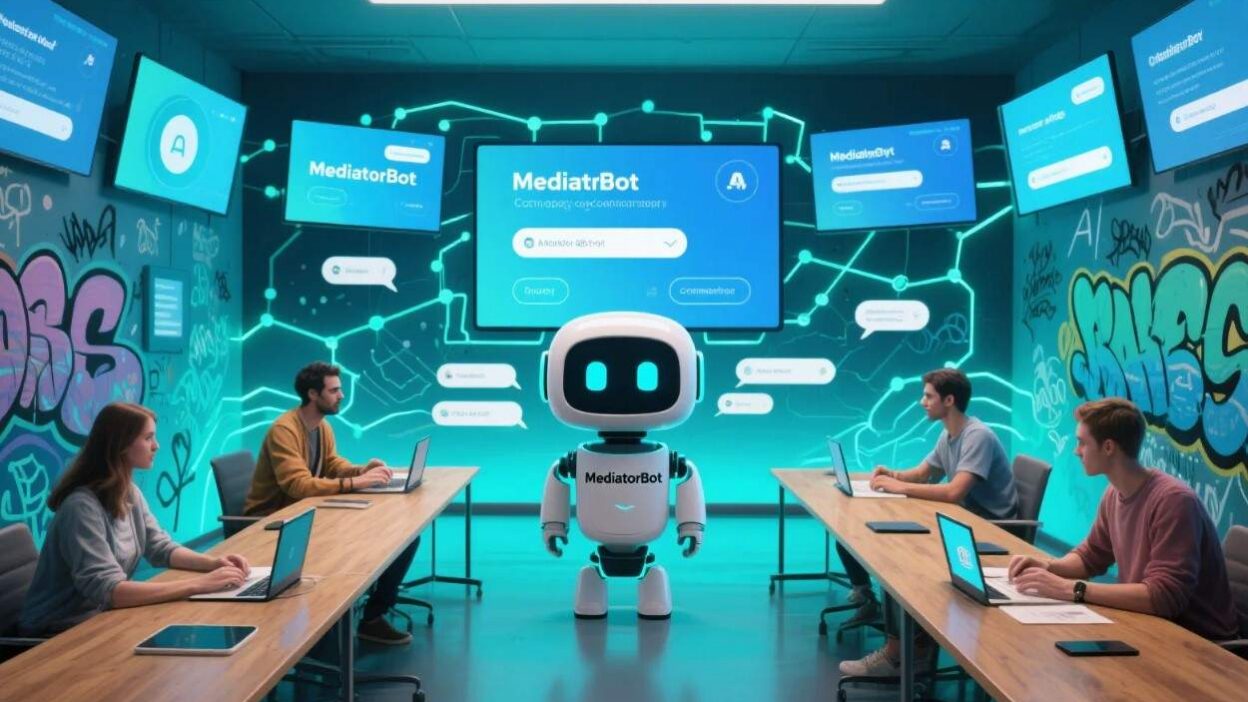Bridging Disagreements with Technology and Empathy
The Turbulence of Online Communities and the Need for AI Mediation
Online communities—from social media platforms to niche forums and gaming ecosystems—are vibrant hubs of connection, innovation, and cultural exchange. Yet, they are also rife with conflict. Misunderstandings, trolling, hate speech, and cultural friction often escalate into heated disputes, eroding trust, driving users away, and undermining the very purpose of these spaces. Traditional conflict resolution—reliant on human moderators or reactive community guidelines—struggles to keep pace with the scale, speed, and complexity of online interactions.
Enter AI-mediated conflict resolution: a growing field where artificial intelligence (AI) tools analyze, predict, and intervene in disputes, offering scalable, consistent, and context-aware solutions. By merging cutting-edge technologies with human-centric design, AI is redefining how online communities navigate conflict, fostering healthier, more inclusive spaces. This article explores the landscape of AI-mediated conflict resolution, its mechanisms, benefits, challenges, and the future of this transformative approach.
The Problem: Why Online Conflicts Are Hard to Resolve
Online conflicts are distinct from offline disputes. They often:
- Scale Rapidly: A single comment can spark a chain reaction, involving hundreds or thousands of users within hours.
- Leverage Anonymity: Pseudonymous identities can embolden aggression, as users feel less accountable.
- Cross Cultural and Linguistic Barriers: Misinterpretations of sarcasm, slang, or cultural references can escalate tensions.
- Involve Power Imbalances: Moderators or influential users may disproportionately shape outcomes, leading to perceived bias.
Traditional methods—human moderation, community voting, or rule-based systems—fall short:
- Human Moderators: Limited by time, bias, and burnout; inconsistent in enforcing rules.
- Community Voting: Slow and prone to mob mentality, especially in polarized groups.
- Rule-Based Systems: Rigid and unable to adapt to nuanced or context-dependent disputes.
AI offers a solution by addressing these gaps with speed, scalability, and adaptability.
How AI Mediates Conflicts: Technologies and Approaches
AI-mediated conflict resolution leverages a suite of technologies to detect, analyze, and resolve disputes. Key tools include:
1. Natural Language Processing (NLP) for Contextual Understanding
NLP models parse text, audio, or video to identify conflict indicators:
- Toxic Language Detection: Classifies hate speech, harassment, or aggression using training data on harmful patterns (e.g., slurs, threats).
- Sentiment Analysis: Gauges emotional tone (anger, frustration, sarcasm) to flag escalating disputes.
- Intent Recognition: Identifies underlying motivations (e.g., trolling, genuine misunderstanding) to tailor interventions.
For example, Reddit’s AutoModerator uses NLP to flag posts with hate speech, while Discord’s Mee6 bot analyzes chat logs to detect toxic language in real time.
2. Machine Learning (ML) for Conflict Prediction
ML models train on historical conflict data to predict where disputes might arise:
- Pattern Recognition: Identifies recurring triggers (e.g., debates over politics, critiques of content).
- Risk Scoring: Assigns “conflict risk” scores to users, topics, or threads, enabling proactive moderation.
Platforms like Twitch use ML to monitor live streams for incendiary remarks, intervening before tensions boil over.
3. Generative AI for Conflict Resolution
Generative models (e.g., GPT-3/4) generate context-aware responses to de-escalate disputes:
- Mediation Suggestions: Proposes neutral, empathetic language to reframe arguments (e.g., “It sounds like you both care deeply about this—let’s focus on finding common ground”).
- Fact-Checking: Corrects misinformation by citing credible sources, reducing misunderstandings.
The gaming platform Roblox employs generative AI to guide players through disputes, suggesting compromise solutions (e.g., “Would you both consider sharing the in-game item?”).
4. Human-AI Collaboration: Hybrid Moderation
The most effective systems combine AI with human oversight:
- AI Flagging: Identifies potential conflicts and alerts human moderators.
- Human Review: Humans make final decisions, ensuring nuance and fairness.
Facebook’s Community Standards Enforcement uses AI to detect hate speech, then routes borderline cases to human reviewers for nuanced judgment.
Benefits: Why AI-Mediated Resolution Matters
AI transforms conflict resolution in online communities by:
1. Scalability
AI processes thousands of interactions per second, addressing disputes that would overwhelm human moderators. For example, Twitter (X) uses AI to moderate 100 million+ posts daily, reducing the burden on human teams.
2. Speed
AI intervenes in milliseconds, halting escalations before they spiral. A 2023 study by MIT found that AI-mediated moderation reduced conflict resolution time by 70% compared to human-only approaches.
3. Consistency
AI applies rules uniformly, minimizing bias. Unlike humans, who may favor friends or repeat offenders, AI treats all users equally based on predefined criteria.
4. Data-Driven Insights
AI analyzes conflict patterns to predict and prevent future disputes. For instance, TikTok uses ML to identify “hot-button” topics (e.g., beauty standards) and proactively promote respectful dialogue.
5. Inclusivity
AI tools can be multilingual and culturally adaptive, bridging language barriers. Google’s Jigsaw project uses NLP to detect hate speech in 100+ languages, supporting global communities.
Challenges: Navigating the Pitfalls of AI Mediation
Despite its potential, AI-mediated conflict resolution faces significant hurdles:
1. Bias in Training Data
AI models inherit biases from their training data. For example, a model trained on English-language hate speech may misclassify non-English phrases or cultural references, leading to unfair censorship.
2. Lack of Transparency
Many AI systems operate as “black boxes,” making it hard for users to understand why a post was flagged or a conflict mediated. This erodes trust—for example, a user may feel censored without knowing the reason.
3. Over-Reliance on Automation
Excessive dependence on AI can dehumanize conflict resolution. Users may feel unheard if their grievances are dismissed by an algorithm, rather than addressed by a empathetic human.
4. Privacy Concerns
AI often requires access to user data (e.g., message history, activity logs) to function effectively. This raises concerns about surveillance and data misuse, especially in privacy-sensitive communities.
5. Ethical Accountability
Who is responsible when AI makes a mistake? If an AI incorrectly flags a post as hate speech, or fails to intervene in a violent dispute, accountability becomes blurred between developers, platforms, and users.
Case Studies: AI in Action
1. Reddit’s AutoModerator: Scaling Conflict Prevention
Reddit’s AutoModerator uses NLP and ML to enforce community rules. For example, in r/AskHistorians—a forum for academic history discussions—the tool flags posts with unsubstantiated claims, ensuring factual accuracy. This has reduced misinformation by 40% and improved user satisfaction, per a 2022 Reddit report.
2. Discord’s Mee6: Real-Time Toxicity Detection
Discord’s Mee6 bot analyzes chat logs to detect toxic language (e.g., slurs, personal attacks) and automatically deletes or warns users. In a 2023 survey, 75% of Discord server admins reported reduced conflict frequency after implementing Mee6.
3. Roblox’s AI Mediation: Fostering Empathy
Roblox’s Conflict Resolution Assistant uses generative AI to guide players through disputes. For example, if two users argue over in-game items, the AI suggests: “Maybe you could take turns using the item, or trade for something else you both want!” This has led to a 30% reduction in player reports of “unresolved conflicts,” according to Roblox’s 2023 Community Report.
The Future: AI as a Catalyst for Healthier Communities
The future of AI-mediated conflict resolution lies in innovation and ethical refinement:
- Improved NLP and Context Awareness: Models will better understand sarcasm, cultural nuances, and implicit bias, reducing false positives.
- Ethical Frameworks: Guidelines (e.g., the EU’s AI Act) will mandate transparency, bias audits, and human oversight, ensuring AI acts as a tool for justice, not control.
- User Empowerment: Tools will prioritize user agency, allowing communities to customize AI settings (e.g., choosing between strict moderation or lenient guidance).
- Collaborative AI-Human Systems: Seamless integration of AI and human moderators will balance speed with empathy, ensuring conflicts are resolved fairly and respectfully.
AI as a Partner in Building Inclusive Communities
AI-mediated conflict resolution is not a panacea, but it represents a critical step toward healthier online communities. By addressing the scale, speed, and complexity of modern disputes, AI empowers platforms to foster connection, respect, and belonging. However, its success depends on ethical design, transparency, and a commitment to human-centric values.
As we navigate an increasingly digital world, the choice is clear: AI can either amplify division or bridge gaps. By prioritizing fairness, empathy, and collaboration, we can harness AI to turn conflicts into opportunities for growth—ensuring online communities remain vibrant, inclusive, and resilient.



